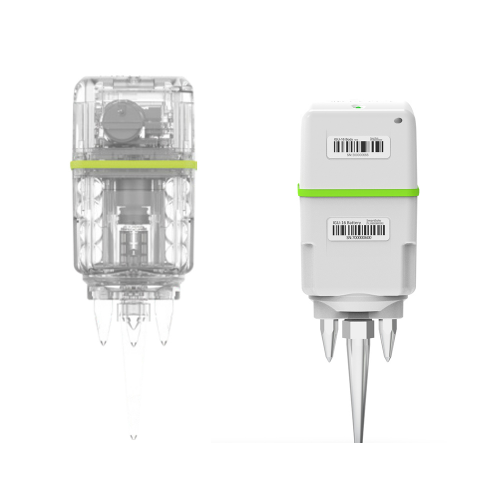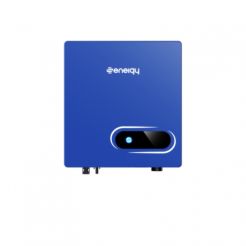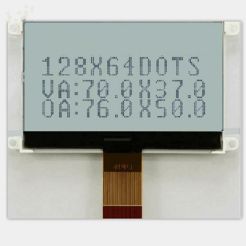3 Component Smart Seismic Sensor
Seismic Instrument, Node Seismic, Geophone Seismic Kit,10hz Geophone, Hydrophone 5hz, Seismic Solutions,3 Component Smart Seismic Sensor,5hz 3-Component Geophones,3 Component Geophone, Smart 3 Component Seismic Sensor
Product Description
IGU-16HR 3C
3 Component Smart Seismic Sensor
Easy to Deploy. Rugged and Reliable.
Patented Modular Design for Easy Battery Replacement
Fast Charging and High Speed Data Downloading
Tags: Seismic Instrument, Node Seismic, Geophone Seismic Kit,10hz Geophone, Hydrophone 5hz, Seismic Solutions,3 Component Smart Seismic Sensor,5hz 3-Component Geophones,3 Component Geophone, Smart 3 Component Seismic Sensor
SmartSolo IGU-16HR 3C was designed to take every possible advantage of the mature and cost-effective electronic and software technologies of the mobile internet era. IGU-16HR 3C is suitable for active and passive seismic exploration. It can be used for energy and mineral exploration, urban seismic surveys, earthquake monitoring, and geophysical scientific research. It can share the same peripherals as IGU-16, and IGU-16HR, and Greater equipment investment savings. Incorporating many of the same high-reliability, low-power devices widely used in cell phones, our smart sensor contains everything necessary to sense and record top-quality seismic data, while keeping its functions and structure as simple as possible. This smart geophone is user-friendly, cost-effective and reliable to operate autonomously even in the most challenging conditions.
Main Features
New Generation
Smart 3 Component Seismic Sensor
Share the same
peripherals as IGU-16, IGU-16HR,
Greater equipment Investment Savings
Small Footprint
95mm X 103mm
All-In-One Modular design provides maximum productivity, maintenance free operation and easy battery replacement
Built-in GPS receiver and
disciplined high precision clock
Suitable for one station
to million station operations
Based on the most highly regarded
DT-SOLO HS geophone
with 10Hz and 5Hz options
Up to 30 days of continuous recording
(see Technical specs for details)
Most cost effective system
on the market
Compatible with vibroseis
and impulsive energy sources
Light weight and compact size
Simple LED State Indicator.
Green for"good to go"and Red for"no good"
DMC, DCC, DHR
The Peripherals of SmartSolo®
Fast Data Harvesting Speed
3000 CHs @ 20 days @ 2ms in < 3.25 hrs
Highly Flexible System Configuration
Complete Software Suite
Specifications
Size and Weight
- 103mm(L) × 95mm(W) × 187mm(H)(w/o spike)
- 2.4kg(Including internal battery and spike)
Data Storage
- 64GB
Recharge Time
- <6hours
Operating Life@25°C
- 30 days Continuous@ 2ms
- 60 days Segmented (12hours ON/12hours SLEEP) @ 2ms
Communication
- -
External Power supply
- Exchange EB battery
Acquisition Performance 5Hz
- Natural Frequency : 5Hz
- Spurious Frequency : >170Hz (>150Hz in horizontal sensor)
- Distortion : <0.1%@12Hz, (0° ~ 10°) vertical tilt, (0° ~ 3°) horizontal tilt
- Damping : 0.7
- Open Circuit Intrinsic Voltage Sensitivity : 76.7 V/m/s (1.95 V/in/s)
- Remark : All parameters are specified at +22°C in the vertical position for vertical geophone and horizontal position for horizontal geophone unless otherwise stated
Acquisition Performance 10Hz
- Natural Frequency : 10Hz
- Spurious Frequency : >240Hz
- Distortion : <0.1%@12Hz, (0° ~ 10°) vertical tilt, (0° ~ 3°) horizontal tilt
- Damping : 0.7
- Open Circuit Intrinsic Voltage Sensitivity : 78.7 V/m/s (2.0 V/in/s)
- Remark : All parameters are specified at +25°C in the vertical position for vertical geophone and horizontal position for horizontal geophone unless otherwise stated.
Physical Specs
- Seismic data channel(s) : 3
- ADC resolution : 32 bits
- Sample intervals : 0.25, 0.5, 1, 2, 4, 8, 10, 20 milliseconds
- Preamplifier gain : 0dB to 36 dB in 6 dB steps
- Anti-alias filter : 206.5 Hz @ 2ms (82.6% of Nyquist)
Selectable - Linear Phase or Minimum Phase - DC blocking filter : 1Hz to 10Hz, 1Hz increments or DC Removed
- Operating temperature : -40°C ~ +70°C
- Waterproof : IP67
- Charging Temperature Range : +3°C ~ +45°C
Channel Performance
- Maximum Input Signal : ±2.5Vpeak @ Gain 0dB
- Dynamic Range : 125dB @ 2ms Gain 0dB
- Equivalent Input Noise : 0.18μV @ 2ms Gain 18dB
- Total Harmonic Distortion : <0.0002% @ Gain 0dB
- Common Mode Rejection : ≥100dB
- Gain Accuracy : <1%
- GPS Time Standard : 1ppm
- Timing Accuracy : ±10μs, GPS Disciplined
- Cross Feed : < -110dB
- System Dynamic Range : 145dB
- Frequency Response : 0 ~ 1652Hz
- Wireless Communication : Bluetooth Low Energy
- Remark : All parameters are specified at 2ms sample interval, 31.25 Hz, 25°C, unless otherwise indicated
Three-component geophone( 3C geophone) is a kind of land-cased geophone to perform HVSR, MASW and vibration analysis, with features of robust, lightweight and convenient for field operation. One vertical and two horizontal high-precisions geophone sensors are properly coupled and mounted in a robust waterproof 3C case equipped with 75mm steel spikes.
◎High-quality 5Hz 3-Component Geophones for accurate seismic measurements
◎Rugged and durable construction for reliable performance in any environment
◎Compact and lightweight design for easy deployment and portability
◎Advanced connectivity options for seamless data transmission and integration
◎Real-time monitoring capabilities for immediate observation and analysis
Smartsolo supplies various 3C geophones ranging from 5Hz to 10Hz
FAQ about 3-Component Smart Seismic Sensor
Q: What is a 3 Component Smart Seismic Sensor?
A: A 3 Component Smart Seismic Sensor is a device used to measure and record ground vibrations and seismic activity in three dimensions: vertical (up and down), north-south, and east-west. It is designed to detect and analyze earthquakes, tremors, and other seismic events.
Q: How does a 3 Component Smart Seismic Sensor work?
A: The 3 Component Smart Seismic Sensor consists of three individual sensors or geophones mounted orthogonally to capture ground motion in different directions. Each sensor measures the velocity or acceleration of ground vibrations and converts them into electrical signals. These signals are then processed and analyzed to provide information about the seismic activity.
Q: What are the main applications of 3 Component Smart Seismic Sensors?
A: 3 Component Smart Seismic Sensors are primarily used in seismic monitoring and earthquake early warning systems. They are installed in various locations, including seismological stations, research institutions, and infrastructure projects such as bridges, dams, and buildings. These sensors provide critical data for seismic hazard assessment, structural health monitoring, and earthquake research.
Q: How accurate are 3 Component Smart Seismic Sensors?
A: The accuracy of 3 Component Smart Seismic Sensors depends on various factors, including their design, calibration, and installation. High-quality sensors can provide precise measurements of ground motion, allowing for accurate analysis and interpretation of seismic events. However, it's important to note that no sensor is entirely immune to noise and environmental interference, which can affect the accuracy to some extent.
Q: Can 3 Component Smart Seismic Sensors detect all types of seismic events?
A: 3 Component Smart Seismic Sensors are sensitive to a wide range of seismic events, including earthquakes, aftershocks, and induced tremors. They can also capture other sources of ground vibrations, such as human activities, explosions, and volcanic activity. However, the detection capabilities may vary based on the sensitivity and frequency response of the specific sensor used.
Q: Can 3 Component Smart Seismic Sensors be connected to a network?
A: Yes, 3 Component Smart Seismic Sensors can be connected to a network for real-time data transmission and remote monitoring. By integrating them into a networked system, users can access seismic data from multiple sensors simultaneously, enabling faster detection, analysis, and response to seismic events.
Q: Are 3 Component Smart Seismic Sensors expensive?
A: The cost of 3 Component Smart Seismic Sensors can vary depending on factors such as the brand, features, and technical specifications. High-end sensors with advanced capabilities and rugged designs tend to be more expensive. However, the cost of these sensors has been decreasing over time as technology advances, making them more accessible for various applications.
Q: Can 3 Component Smart Seismic Sensors withstand harsh environmental conditions?
A: Yes, 3 Component Smart Seismic Sensors are designed to withstand harsh environmental conditions. They are typically built with robust and durable materials to ensure their longevity in outdoor installations. However, it's important to consider the specific environmental conditions of the deployment location and choose sensors with appropriate protection ratings for optimal performance and durability.



